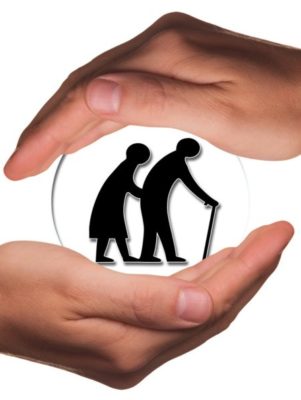
Unveiling the Reality of elderly abuse in America
A Call for Change
As a society, we have a moral obligation to protect and care for our most vulnerable members, including the elderly. However, a dark reality persists within the borders of the United States: the alarming prevalence of elderly abuse. Defined as any form of mistreatment inflicted upon older adults, elderly abuse encompasses physical, emotional, sexual, or financial harm. This article sheds light on the disturbing issue of elderly abuse in America, explores its causes, and highlights the urgent need for comprehensive measures to combat this heinous crime.
The Scope of the Elderly Abuse Problem
Elderly abuse is a silent epidemic that affects millions of older Americans every year. According to the National Council on Aging (NCOA), approximately 1 in 10 Americans aged 60 and above have experienced some form of elder abuse. However, due to underreporting and the hidden nature of this crime, the actual figures are likely much higher.
Forms of Elderly Abuse
Elderly abuse manifests itself in takes on many forms. Each of which has severe consequences for the victim’s physical and mental well-being. These include:
Physical Abuse
The intentional use of force resulting in physical pain, injury, or impairment.
Emotional Abuse
Inflicting mental anguish, humiliation, or distress through verbal or non-verbal acts.
Sexual Abuse
Non-consensual sexual contact of any kind.
Financial Abuse
Exploitation of an elderly person’s resources, assets, or financial control for personal gain.
Neglect
Failure to provide essential care, such as food, shelter, medical assistance, or emotional support.
Abandonment
Desertion of an elderly person without arranging for appropriate care.
Causes and Risk Factors
Elderly abuse stems from a complex interplay of individual, societal, and systemic factors. Some common causes and risk factors include:
Social Isolation
Elderly individuals who lack social connections are more susceptible to abuse.
Caregiver Stress
Overburdened caregivers, both family members and professional caregivers, may resort to abusive behavior due to stress, frustration, or burnout.
Mental Health Issues
Both the abuser and the victim may suffer from mental health conditions, contributing to the abusive dynamics.
Substance Abuse
Substance abuse problems within the elderly population or their caregivers may lead to abuse.
Power Imbalance
Dependency, particularly in cases where the elderly person relies on the abuser for care or financial support, can create a power imbalance that fosters abuse.
Addressing the Issue
Tackling elderly abuse requires a comprehensive and multi-faceted approach:
Raising Awareness
Public education campaigns can help spread awareness about the signs, risks, and prevention of elderly abuse, encouraging reporting and intervention.
Strengthening Laws and Policies
Legislation should be enacted or reinforced to protect older adults, prosecute abusers, and establish mandatory reporting requirements across all states.
Enhancing Social Support
Community-based programs and services should be expanded to address the social isolation experienced by many elderly individuals, providing them with companionship and resources.
Improving Caregiver Training
Professional caregivers should receive comprehensive training on elderly care, including recognizing signs of abuse and managing caregiver stress.
Encouraging Reporting
Encouraging individuals to report suspected cases of elderly abuse through accessible and confidential reporting mechanisms is crucial.
Conclusion
Elderly abuse is a deeply concerning issue that demands immediate attention and action. The prevalence of this form of mistreatment within our society is a stain on our collective conscience. As a nation, we must recognize the inherent worth and dignity of our elderly population and take concrete steps to protect them from harm.
Combatting elderly abuse requires a multifaceted approach that involves raising awareness, strengthening laws and policies, enhancing social support, improving caregiver training, and encouraging reporting. By implementing these measures, we can create a society that values and safeguards the well-being of our older adults.
It is crucial for families, communities, healthcare professionals, policymakers, and the legal system to work collaboratively to prevent, detect, and address cases of elderly abuse. By fostering a culture of respect, empathy, and accountability, we can create an environment where elderly individuals can age with dignity, free from the fear of abuse.
Let us stand united in our commitment to protecting the vulnerable elderly population, ensuring that they receive the care, support, and respect they deserve. Together, we can build a future where elderly abuse becomes a thing of the past, and older adults can thrive in an environment of compassion and safety.